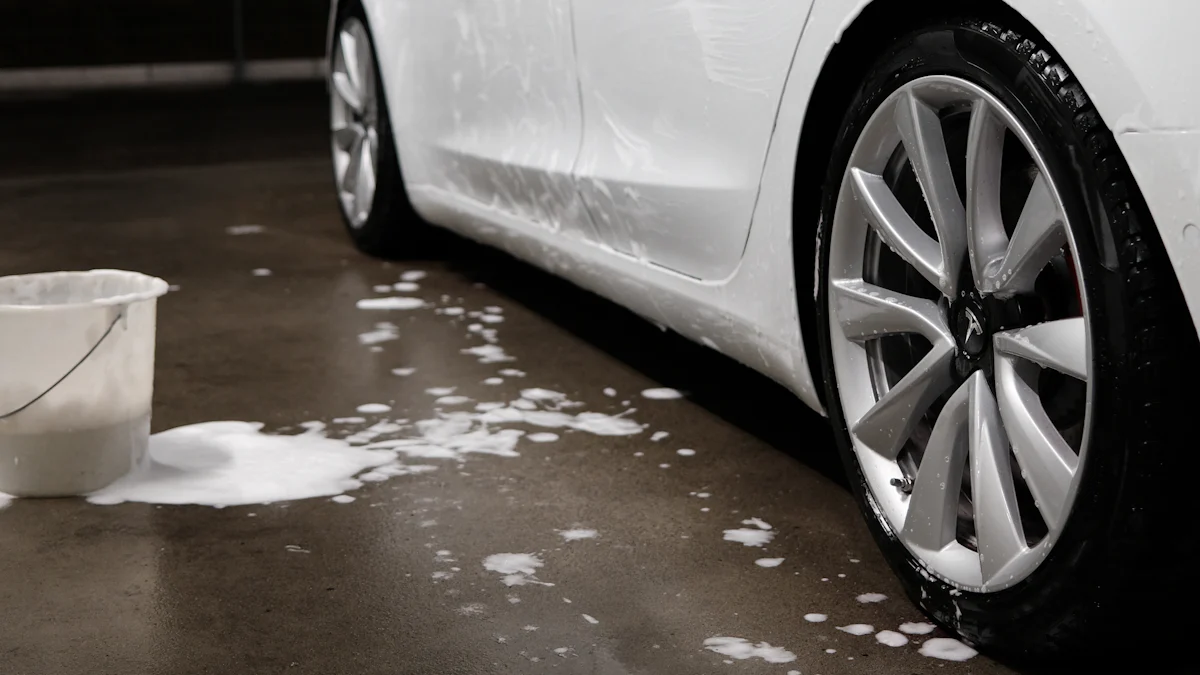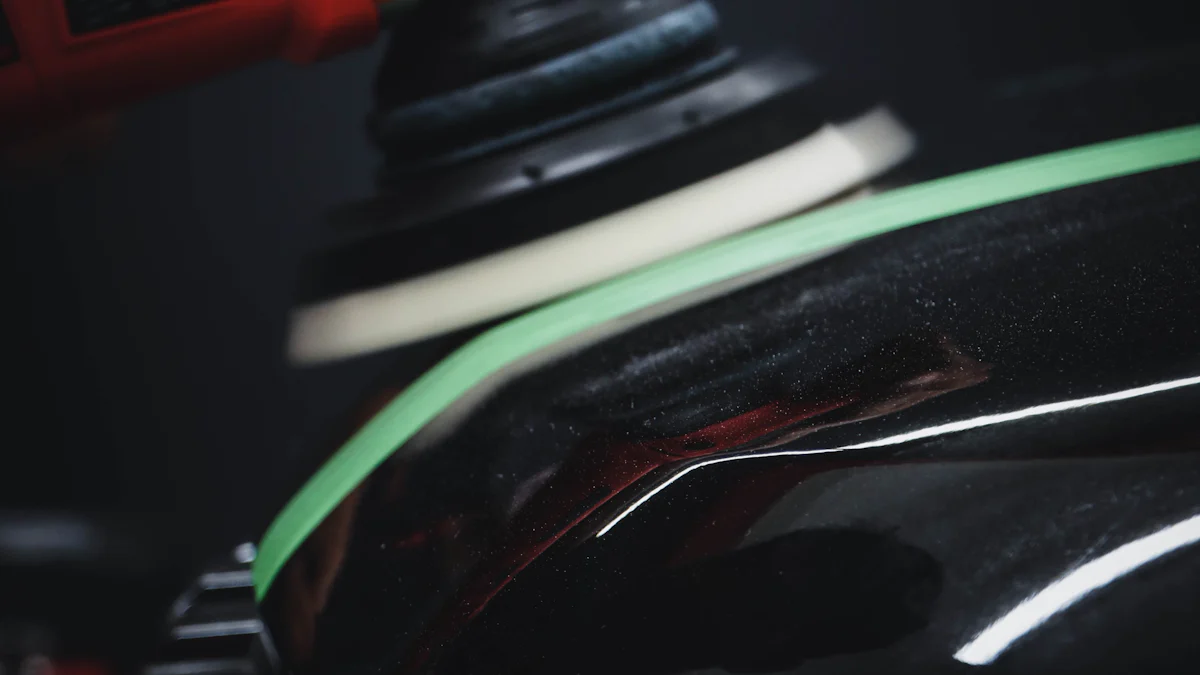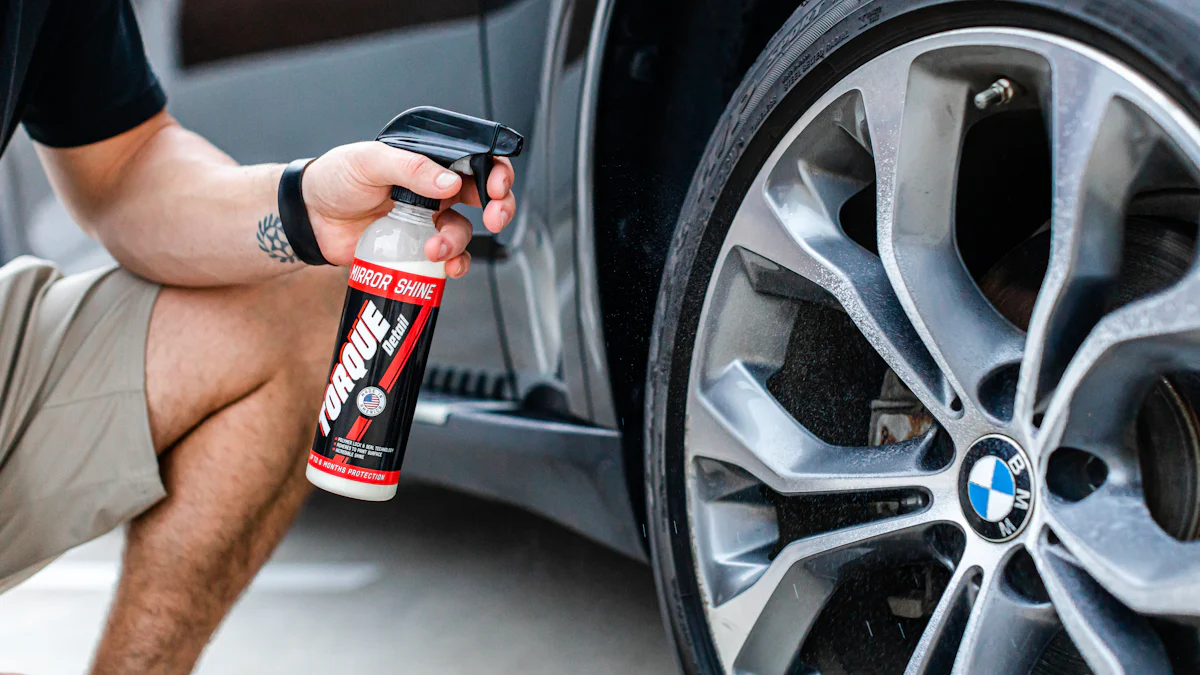
Choosing the right coating is crucial for achieving optimal durability and performance. SiO2 coating, renowned for its hydrophobic properties, creates a sleek surface that enhances color depth and effectively repels water. In contrast, silicon carbide ceramic coating establishes a strong, durable bond with surfaces, providing exceptional hardness and chemical resistance. When comparing sio2 vs ceramic coating, SiO2 offers a smooth, glossy finish, while SiC delivers a mirror-like reflection and excels in extreme conditions. For those seeking convenience, a sio2 ceramic coating spray can be an excellent option, but understanding these distinct features is key to selecting the best sio2 ceramic coating or opting for the superior durability of SiC.
Key Takeaways
- SiO2 coatings are ideal for those seeking a hydrophobic finish that repels water and enhances surface appearance, making them perfect for automotive paint protection.
- SiC coatings offer superior durability and thermal resistance, making them suitable for high-performance applications in extreme conditions, such as aerospace and automotive manufacturing.
- SiO2 coatings are easier to apply, requiring only simple spray or wipe methods, making them accessible for DIY enthusiasts and everyday users.
- SiC coatings demand a more specialized application process, ensuring a robust bond that provides long-lasting protection against wear and tear.
- Regular maintenance for SiO2 coatings is necessary, as they may require reapplication over time, while SiC coatings are low-maintenance due to their exceptional durability.
- Choosing between SiO2 and SiC coatings depends on specific needs, such as environmental exposure, desired longevity, and maintenance preferences.
Understanding SiO2 and SiC Coatings

What is SiO2 Coating?
Composition and chemical properties
SiO2 coating, also known as silicon dioxide coating, is primarily made from silica, a compound of silicon and oxygen. This material is widely recognized for its chemical stability and non-reactive nature. SiO2 coatings form a thin, transparent layer on surfaces, creating a protective barrier against environmental factors. The coating bonds to the surface through a “glue-like” connection, which ensures a smooth application and reliable adhesion.
The chemical properties of SiO2 make it resistant to UV radiation and many chemicals. This resistance helps maintain the integrity of the coating over time, even when exposed to harsh conditions. Additionally, its lightweight composition makes it suitable for a variety of applications, from automotive paint protection to consumer electronics.
Key features: hydrophobicity, UV resistance, and ease of application
SiO2 coatings are celebrated for their hydrophobic properties. Water beads up and rolls off treated surfaces, reducing water spots and making cleaning easier. This feature is particularly beneficial for vehicles, as it keeps them looking clean and polished with minimal effort.
UV resistance is another standout feature of SiO2 coatings. They shield surfaces from harmful ultraviolet rays, preventing fading, discoloration, and degradation over time. This makes them an excellent choice for outdoor applications where prolonged sun exposure is a concern.
Ease of application sets SiO2 coatings apart. They can be applied using simple methods like spraying or wiping, making them accessible for both professionals and DIY enthusiasts. This convenience, combined with their protective qualities, has made SiO2 coatings a popular choice for everyday use.
What is SiC Coating?
Composition and chemical properties
SiC coating, or silicon carbide coating, is composed of silicon and carbon atoms arranged in a crystalline structure. This unique composition gives SiC coatings exceptional hardness and durability. Unlike SiO2, SiC forms a “welded” connection with the surface, chemically bonding to create a cohesive and robust layer.
The chemical properties of SiC are remarkable. It boasts a melting point of 2,730 °C and ranks 9 on the Mohs scale of hardness, just below diamond. These characteristics make SiC coatings highly resistant to wear, corrosion, and extreme temperatures. They also withstand exposure to acidic and alkaline cleaners, ensuring long-lasting performance in demanding environments.
Key features: hardness, thermal resistance, and abrasion resistance
Hardness is one of the defining features of SiC coatings. The tough, durable layer protects surfaces from scratches, impacts, and other physical damage. This makes SiC coatings ideal for applications where durability is a top priority.
Thermal resistance is another key advantage. SiC coatings perform exceptionally well in high-temperature environments, maintaining their protective properties even under extreme heat. This makes them a preferred choice for industries like aerospace and automotive manufacturing.
Abrasion resistance further enhances the appeal of SiC coatings. They can endure harsh conditions, including friction and mechanical wear, without compromising their effectiveness. This durability ensures that SiC coatings remain intact and functional for extended periods, even in challenging settings.
Key Differences in Application and Performance

Protective Properties
SiO2: Best for chemical resistance and water repellency
SiO2 coatings excel in providing a protective barrier against chemicals and environmental factors. Their “glue-like” bonding mechanism creates a smooth, transparent layer that shields surfaces from chemical reactions and contaminants. This makes them highly effective in environments where exposure to harsh chemicals is common. Additionally, their hydrophobic nature ensures water beads up and rolls off effortlessly, reducing water spots and making cleaning easier. For those seeking a balance between protection and aesthetic enhancement, SiO2 coatings deliver reliable performance.
SiC: Superior for physical durability and heat resistance
SiC coatings stand out for their unmatched durability and resistance to extreme conditions. Their “welded” chemical bond forms a cohesive layer that can endure physical wear, scratches, and impacts. This makes them ideal for applications requiring long-lasting protection. SiC coatings also perform exceptionally well in high-temperature environments, withstanding heat up to 1600°C without losing their protective properties. Their ability to resist both physical and thermal stress makes them a preferred choice for industries like aerospace and automotive manufacturing.
Environmental Suitability
SiO2: Ideal for environments with exposure to chemicals or UV light
SiO2 coatings thrive in environments where surfaces face constant exposure to chemicals or ultraviolet rays. Their chemical stability ensures they remain unaffected by most acids and bases, making them suitable for manufacturing and consumer applications. Furthermore, their UV resistance protects surfaces from fading, discoloration, and degradation caused by prolonged sun exposure. This makes SiO2 coatings an excellent option for outdoor use, especially for vehicles and equipment that need to maintain their appearance over time.
SiC: Suitable for high-temperature or abrasive conditions
SiC coatings are designed for demanding environments. Their ability to withstand high temperatures and resist oxidation makes them indispensable in industries where equipment faces extreme heat. Additionally, their abrasion resistance ensures they hold up well under mechanical wear and tear. Whether it’s machinery exposed to friction or surfaces subjected to harsh cleaning agents, SiC coatings provide a robust solution. Their superior chemical and physical stability make them a go-to choice for challenging conditions.
Application Methods
SiO2: Easier to apply with spray or wipe-on methods
SiO2 coatings offer simplicity when it comes to application. They can be applied using straightforward methods like spraying or wiping, making them accessible to both professionals and DIY enthusiasts. This ease of use allows users to achieve a polished, protective finish without requiring specialized tools or extensive training. For those looking for a quick and effective way to enhance surface protection, SiO2 coatings provide a user-friendly option.
SiC: Requires more specialized application techniques
SiC coatings demand a more meticulous application process. Their chemical bonding mechanism requires precise preparation and often involves professional-grade equipment. This ensures the coating forms a durable, cohesive layer that delivers maximum protection. While the application process may take more time and expertise, the results are worth the effort. SiC coatings provide a mirror-like finish and long-lasting durability, making them a valuable investment for high-performance applications.
Maintenance and Durability Comparison
Longevity of Coatings
SiO2: Moderate durability, may require reapplication over time
SiO2 coating offers reliable protection, but its durability tends to be moderate. Over time, environmental factors like UV exposure and chemical interactions can gradually wear down the coating. This means surfaces treated with SiO2 may require periodic reapplication to maintain their protective qualities. While this might seem like a drawback, the ease of reapplication makes it manageable for most users. For those who prioritize convenience and a glossy finish, SiO2 remains a practical choice despite its need for occasional upkeep.
SiC: High durability, resistant to wear and tear
SiC coatings, on the other hand, excel in longevity. Their “welded” chemical bond creates a robust layer that resists wear and tear, even under harsh conditions. This durability makes them ideal for applications where long-term performance is essential. SiC coatings withstand physical abrasion, chemical exposure, and extreme temperatures without degrading. For industries like aerospace or automotive manufacturing, this high durability translates to fewer maintenance cycles and lower long-term costs. The superior resilience of SiC coatings ensures they remain effective for extended periods, making them a dependable solution for demanding environments.
Maintenance Requirements
SiO2: Simple cleaning and occasional reapplication
Maintaining SiO2 coatings is straightforward. Regular cleaning with mild detergents helps preserve their hydrophobic properties and glossy appearance. However, due to their moderate durability, these coatings may require reapplication every few months or years, depending on usage and environmental exposure. This process is simple and can often be done by the user, making SiO2 coatings a popular choice for those who value ease of maintenance. Their user-friendly nature ensures that even individuals with minimal experience can keep surfaces protected and looking polished.
SiC: Minimal maintenance due to its robust nature
SiC coatings demand far less maintenance. Their exceptional hardness and chemical resistance allow them to endure tough conditions without losing effectiveness. Routine cleaning is usually sufficient to keep these coatings in top condition. Unlike SiO2, SiC coatings rarely require reapplication, thanks to their long-lasting durability. This low-maintenance quality makes them particularly appealing for industrial and professional applications where downtime for maintenance is costly. For users seeking a “set it and forget it” solution, SiC coatings deliver unmatched reliability and convenience.
Suitability for Different Users and Scenarios
Automotive Industry
SiO2: Preferred for paint protection and hydrophobic effects
SiO2 coating has become a favorite in the automotive world, especially for paint protection. Its hydrophobic properties create a slick surface that repels water, reducing water spots and keeping vehicles cleaner for longer. This feature not only enhances the car’s appearance but also simplifies maintenance. SiO2 coatings also provide a glossy finish that deepens the color of the paint, making vehicles look polished and vibrant. For car owners who want their vehicles to shine while staying protected from environmental damage, SiO2 coatings offer an excellent solution.
SiC: Used for high-performance parts and heat resistance
SiC coatings cater to the needs of high-performance vehicles and specialized automotive parts. Their exceptional hardness and heat resistance make them ideal for components exposed to extreme conditions, such as engine parts or exhaust systems. SiC coatings form a durable layer that withstands wear, corrosion, and high temperatures, ensuring long-lasting performance. Additionally, their mirror-like finish adds a sleek, professional look to treated surfaces. For industries and individuals focused on durability and performance, SiC coatings deliver unmatched reliability.
Industrial Applications
SiO2: Effective for chemical protection in manufacturing
In manufacturing, SiO2 coatings excel at providing chemical protection. Their resistance to acids, bases, and other harsh substances makes them a practical choice for equipment and surfaces exposed to corrosive environments. SiO2 coatings also shield against UV radiation, which helps maintain the integrity of machinery used outdoors. Their lightweight composition and ease of application allow manufacturers to protect a wide range of surfaces without adding unnecessary complexity. For industries prioritizing chemical stability and convenience, SiO2 coatings prove to be a valuable asset.
SiC: Ideal for machinery exposed to high temperatures or abrasion
SiC coatings shine in industrial settings where machinery faces extreme heat or abrasive conditions. Their ability to endure temperatures up to 1600°C makes them indispensable for equipment used in high-temperature processes, such as those in aerospace or semiconductor manufacturing. SiC coatings also resist mechanical wear, ensuring that machinery remains operational even under constant friction or heavy use. By extending the lifespan of critical components, SiC coatings help industries reduce downtime and maintenance costs. Their robust nature makes them a go-to choice for demanding industrial applications.
Consumer Use
SiO2: Popular for DIY applications due to ease of use
SiO2 coatings have gained popularity among DIY enthusiasts because of their simplicity. They can be applied using basic methods like spraying or wiping, making them accessible to users with minimal experience. This ease of application allows consumers to achieve professional-looking results without specialized tools or training. SiO2 coatings also enhance the appearance of everyday items, from cars to household surfaces, by adding a glossy, protective layer. For individuals seeking an affordable and user-friendly way to protect and beautify their belongings, SiO2 coatings are a perfect fit.
SiC: More suited for professional or specialized use cases
SiC coatings, on the other hand, cater to professionals and specialized applications. Their application process often requires precise preparation and advanced equipment to ensure proper bonding. This makes them better suited for users with technical expertise or access to professional services. SiC coatings provide unparalleled durability and performance, making them ideal for high-value items or projects requiring long-term protection. For those willing to invest in a premium solution, SiC coatings offer exceptional results that stand the test of time.
SiO2 coating and SiC coating each bring unique strengths to the table, making them suitable for different needs. SiO2 coating excels in chemical resistance and hydrophobicity, offering a sleek finish that’s easy to apply and maintain. It’s perfect for general use, especially for automotive paint protection. SiC coating, however, stands out with its unmatched hardness, thermal resistance, and durability. Its ability to endure extreme conditions makes it ideal for industrial and high-performance applications. Choosing between the two depends on specific requirements like environmental exposure, maintenance preferences, and desired longevity.
FAQ
What makes SiC coatings stand out?
SiC coatings, or silicon carbide coatings, are known for their exceptional durability and resistance to harsh conditions. They chemically bond to surfaces, forming a “welded” connection that enhances their strength. Unlike SiO2 coatings, SiC coatings can withstand extreme temperatures and resist acidic or alkaline cleaners. This makes them ideal for demanding environments where surfaces face constant wear and tear. For those seeking a robust and long-lasting solution, SiC coatings deliver unmatched performance.
How do SiO2 and SiC coatings differ in application?
SiO2 coatings are easier to apply, often requiring only simple tools like a spray or wipe. This makes them accessible for DIY enthusiasts and professionals alike. On the other hand, SiC coatings demand more precision during application. Their chemical bonding process requires proper surface preparation and specialized equipment. While SiC coatings take more effort to apply, they provide a thicker, more durable layer that offers superior protection.
Are all ceramic coatings considered nano coatings?
Yes, all ceramic coatings fall under the category of nano coatings. The term “nano” refers to the microscopic size of the particles used in these coatings. However, not all nano coatings are ceramic. Ceramic coatings specifically include SiO2 (silicon dioxide) or SiC (silicon carbide) as their primary components. These materials create a protective layer on solid surfaces, offering enhanced durability and resistance to environmental factors.
Why should someone choose SiO2 coatings?
SiO2 coatings provide a strong protective layer with a smooth, glossy finish. They bond to surfaces through a “glue-like” connection, creating a hard shell that shields against UV rays, chemicals, and water. If the coating gets damaged, it can be polished off and reapplied without affecting the surface underneath. SiO2 coatings are perfect for users who want a deeper, richer color and an easy-to-maintain solution for everyday use.
How does SiC compare to SiO2 in terms of chemical resistance?
SiC coatings outperform SiO2 coatings when it comes to chemical resistance. Their unique chemical structure allows them to endure exposure to acidic and alkaline substances without degrading. This makes SiC coatings a better choice for environments where surfaces encounter harsh chemicals regularly. SiO2 coatings, while resistant to many chemicals, may not hold up as well under such extreme conditions.
Can SiO2 coatings enhance the appearance of a surface?
Absolutely! SiO2 coatings are popular for their ability to enhance the visual appeal of surfaces. They create a sleek, glossy finish that deepens color and adds a polished look. This makes them a favorite in the automotive industry, where they protect paint while making vehicles look vibrant and clean. For anyone looking to combine protection with aesthetic enhancement, SiO2 coatings are an excellent option.
What maintenance is required for SiC coatings?
SiC coatings require minimal maintenance due to their robust nature. Routine cleaning with a pH-neutral soap is usually enough to keep them in top condition. Avoid using automatic car washes, as the harsh chemicals can compromise the coating’s integrity. Thanks to their durability, SiC coatings rarely need reapplication, making them a low-maintenance choice for long-term protection.
Do SiC coatings have any visual drawbacks?
Some SiC coatings may exhibit a “rainbow effect” under certain lighting conditions. However, this is not a universal trait and depends on the specific product used. Many high-quality SiC coatings, like those from reputable manufacturers, offer a deep gloss without this effect. For users prioritizing both durability and aesthetics, selecting a premium SiC coating ensures the best results.
Are SiC coatings suitable for high-temperature environments?
Yes, SiC coatings excel in high-temperature settings. With a melting point of 2,730 °C (4,950 °F), they can withstand extreme heat without losing their protective properties. This makes them indispensable in industries like aerospace and automotive manufacturing, where equipment often operates under intense thermal stress. SiC coatings provide reliable protection even in the most challenging conditions.
Which coating is better for DIY applications?
SiO2 coatings are the go-to choice for DIY enthusiasts. Their simple application process, which involves spraying or wiping, makes them easy to use without professional training. SiC coatings, while offering superior durability, require more expertise and specialized tools for proper application. For those looking for a user-friendly option, SiO2 coatings provide excellent protection with minimal effort.